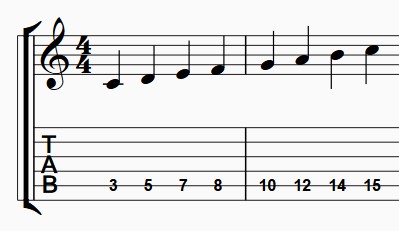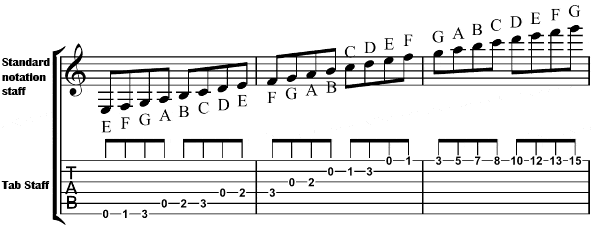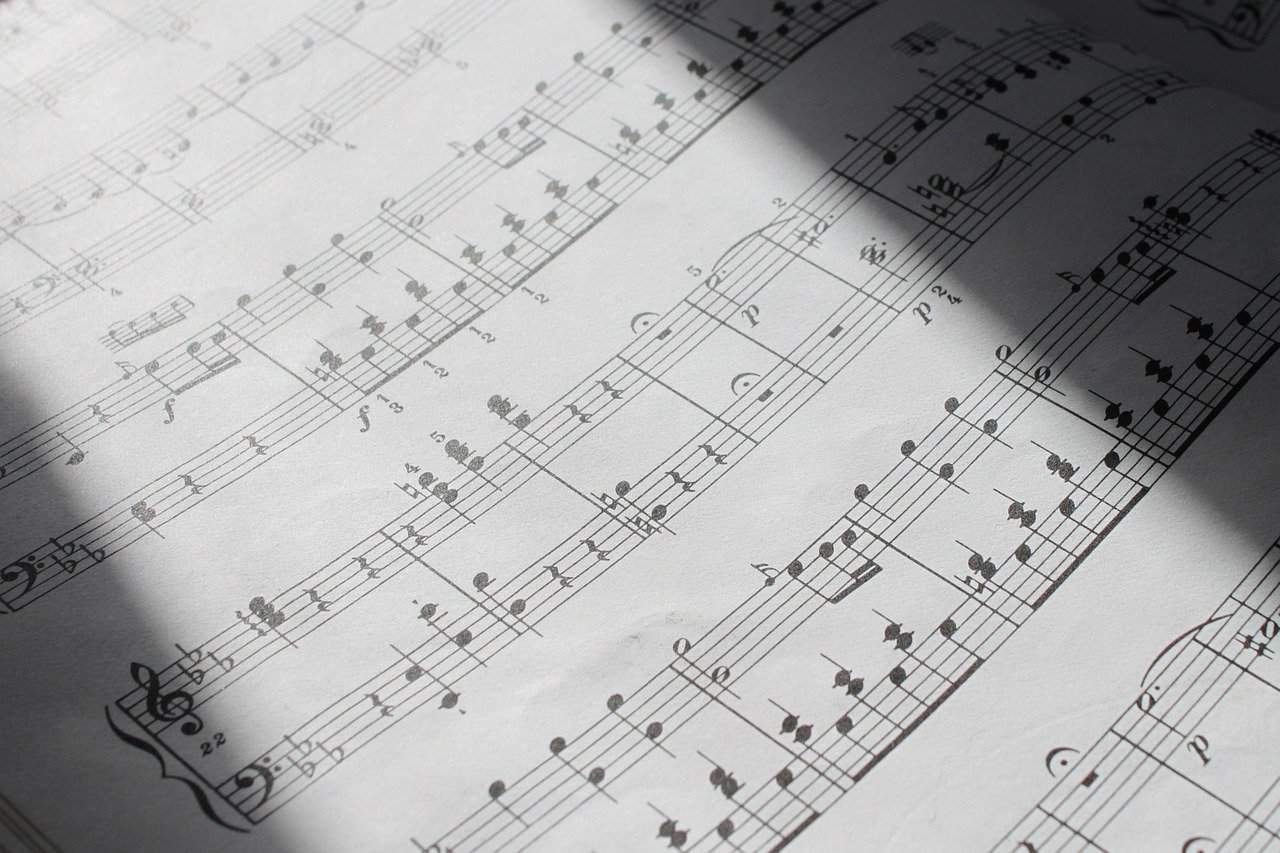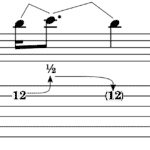If you’ve been playing guitar and learning music for any length of time, the topic of sheet music has likely come up.
For those of you interested in learning to read sheet music, I’ll be giving some tips to help speed up the process today.
There are plenty of ways to increase your ability to read and understand sheet music.
Here are 5 simple tips for learning to read sheet music for guitar faster:
- Mnemonics
- Start simple
- Link it to your instrument
- Writing it out
- Try a composition program
You might be trying to weigh the benefits of learning sheet music and one thing I will say is that as far as composing goes, it has helped me a lot.
Whether you’re new to sheet music and are considering learning it or you’re already doing so and just feel stuck, I’m here to help. But first…
Do you actually need to read music to play guitar?
The short answer is no.
You can get by just fine without knowing sheet music and I know plenty of guitar players who couldn’t even read basic notes and who are way better at playing guitar than I am.
Even famous players like Jimi Hendrix and Paul McCartney didn’t know anything about sheet music and you could say the same for many modern musicians.
Most of them just learned chord shapes, progressions, and guitar scales.
Some just did it by ear (which isn’t an amazing skill, by the way. It’s often trial and error).
Standard notation vs guitar tabs
Guitar tablature leaves out a lot of the information you get from sheet music:
- Tabs don’t give an idea of the timing
- Tabs don’t provide a measure of tempo or rhythm
- Tabs don’t show you the note relationships as well, which deprives you of a visual representation of the way notes interact
Tabs are commonly a group of numbers representing frets on the guitar and each line represents a string.
While this works great for learning the frets to play a song or for learning scales, it doesn’t teach you notation.
The problem with this comes in when you’re trying to play with other musicians.
So eventually everyone winds up learning a bit of supplementary music theory basics like Keys and chord names and progressions.
You also wind up having to listen to the song to figure out how fast to play the notes, which works great for modern music where we can stream anything instantly, but music notation has the advantage here in that you can understand the tempo of the song without listening to the song.
No tempo or rhythm
Rhythm refers to the spacing between the notes, for instance:

The first bar for “Mary Had a Little Lamb” is four quarter notes, and you’d play them counting 1-4- simple enough.
But what about when you see (or hear) something like the second-to-last bar there?
Hearing it in a song might make it easy to sort of follow, but what if you’re writing your own song and want to communicate the timing without the tedious exercise of showing everyone individually?
Guitar tabs can’t help you with that.
This can be worked around by using apps and programs like guitar pro and tux guitar (a free guitar pro alternative).
But that assumes you can find tabs for the song and that someone wrote them correctly.
Even guitar pro takes rhythm into account though.
No visual representation of the harmony
Finally, sheet music was created to help musicians and composers more easily write out their music, but it also helps visually represent tonal harmony.
Modern western music has tonal harmony at its core.
Obviously, just learning to read sheet music won’t make you a master composer, you’ll probably want to get into music theory more in-depth, but it will help you when you’re playing with a piano player or classical musician.
Take a look at these two examples:

Both are the same melody but notice how the sheet music shows the notes flowing up in a clear direction, that’s the harmony visually represented.
Personally, I found this amazing once I got the hang of reading sheet music.
How to read standard music notation for guitar
Standard notation for guitar is written on the treble clef, with the clef loop going around the G line.
One thing to note is that while we’re using the treble clef for the guitar, everything is played an octave lower in comparison to the piano.
The treble clef looks like this and the notes read like this:

You can find these notes on your guitar like so:

It’s helpful to have a decent map of the notes on your guitar though and to be familiar with them.
Where to get guitar sheet music
Well, any sheet music you find can be translated to the guitar- most of its classical guitar though.
If you’re looking for sheet music tailored for guitar, you can try a couple of websites:
They not only provide sheet music, but it comes with the tablature running below, this is especially helpful for beginners learning music notation.
MuseScore provides free scores as well as paid ones.
The awesome thing about this website is that they have a program that allows you to import the sheets as editable files that you can even play and listen to.
We’ll be looking at the program in more detail in a little bit.
How to read guitar tabs
Guitar tabs are considerably easier to read than notation because they give the exact string and fret.
The downside is that you don’t know what note you’re playing, but the upside is that it’s easier to learn to read tabs than sheet music.
Where to get guitar tabs
If you don’t know Ultimate Guitar, I don’t know what to tell you.
If you’re an absolute beginner, go to ultimate guitar and type in the name of a song you like.
If you’re an intermediate, shame on you for not knowing.
Jokes aside, it’s one of the most widely used platforms.
Guitar pro has pretty accurate tabs, but you have to download the tabs to use them, which you then slap into Tux guitar or the guitar pro app and you play along.
The benefit of this is that you don’t have to be online to learn a song once you’ve downloaded it.
Songsterr also allows you to hear the track, but unlike guitar pro, you can only play it online.
It’s also got a huge library of tracks, so you can rest assured that you’ll find the song you want.
How to read guitar chord diagrams
Guitar chord diagrams are pretty easy to read.
The horizontal lines represent frets, the vertical lines represent the strings from left to right- thick to thin. X’s are strings you don’t play and O’s are strings you let ring.
Where to get guitar chord diagrams
TrueFire.com is a resource with a huge list of chord diagrams, however, you are requested to sign up before getting their free diagrams.
Guitar-chord.org is another resource you can try.
Otherwise, just do what most of us do and look up the chord on Google’s image search.
5 tips to learn how to read music for guitar faster
1. Mnemonics
Mnemonics are simply rhymes we use to remember things. In this case, there are rhymes for memorizing the clefs.
Ultimately reading is an exercise of memory recall.
These devices just make it easier to recall while you’re getting the hang of reading, eventually, you won’t need them. But the key is practice.
2. Start simple
Start by learning to read scales and play along.
Scales have predictable notes, so it allows you to recognize the notes on the sheet more than remember them.
Once you get the hang of that, try reading simple tunes with a simple rhythm and not too many notes.
Step by step, soon you’ll be playing off of something like this:
3. Link it to your instrument
I’ve mentioned playing along already, but it bears repeating, when reading the notes, play them on your guitar.
4. Writing it out
Once you have an idea about what you’re reading, try to put it into practice by writing out a melody or a simple scale and then playing it.
You can either draw your own stave and write it there or you can do what I prefer…
5. Try a composition program
Remember MuseScore?
It’s a free program you can download and use to learn and write sheet music.
In fact, all the little sheets in this post are written from MuseScore.
You can export it to PDF or MIDI or even MP3.
The great thing about MuseScore is that it gives you immediate feedback about what you’re writing and how it sounds.
Overall, the main thing that will help you learn sheet music quickly is to practice regularly.

Hello there, my name is Ramiro and I’ve been playing guitar for almost 20 years. I’m obsessed with everything gear-related and I thought it might be worth sharing it. From guitars, pedals, amps, and synths to studio gear and production tips, I hope you find what I post here useful, and I’ll try my best to keep it entertaining also.





